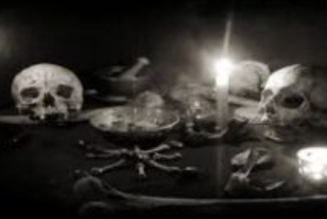The scientific method can be thought of as the set of techniques for the investigation of phenomena, the acquisition of knowledge, the creation and testing of theories, the sharing of those results, and ongoing reexamination of all of these things using a rigorous protocol.
Science is based on empirical and measurable evidence (as defined by the capabilities of its time period) and has at its core the tenet that the universe will reveal itself through reasoning and observation.
Indeed, science and sacred science were one and the same but over time they began to drift apart, with the so-called Age of Enlightenment in Europe being the great schism between the two.
The single biggest difference between the mundane sciences and the sacred sciences is that in the sacred sciences the basis for evidence and observation is different.
Intuition and inner experiences are considered as observations and sources of data within the sacred sciences.
One of the things that remains similar is that there is still a process of investigation and of testing for these less tangible observations.
In Astrology, additions to what is considered to be accepted knowledge is not instantaneous nor simply taken as a given because a noted astrologer had an epiphany.
It is a sacred science because it takes many observations that are then tested, and then found to be consistent with repetition by multiple practitioners.
Also, anything that is new that is coming into Astrology must not disrupt the existing accepted practices and theories unless they provide a more comprehensive perspective that proves its worth.
A good example from the mundane sciences is the shift in understanding from Newtonian physics to Einstein’s physics to Quantum physics.
The addition of the new theories and additional accepted facts do not do damage to the system as a whole because each of these things applies to specific frameworks.
The mundane sciences are constantly, though slowly, changing the boundaries of what is considered to be known.
Although we will primarily work magic using these Seven Elder Planets, let me use Uranus, one of the Outer Planets discovered after the advent of telescopes, as an example of how sacred science deals with new observations.
Uranus was discovered in 1781 by Frederick William Herschel and was a shock to the scientific community as it was the first Planet discovered that could not be seen with the naked eye and more than doubled the size of the Solar System due to its distance from the Sun.
The name for the Planet was changed twice before finally it became set as Uranus.
Astrologers did not pull out their crystal balls nor consult an oracle to determine what Uranus meant in their charts.
Instead, over the course of years and decades Uranus was added to charts, both current and historical, to observe what had occurred when it was in particular positions.
Over the course of many debates, with many published articles and books, a consensus was reached on what impact Uranus had in the chart.
It is this process of investigation that makes Astrology a sacred science. Even a century after its discovery, astrologers were still debating the finer points, such as which Sign was ruled, if any, by Uranus.
In Zadkiel’s Text Book of Astrology (1879), he states: Some modern authors have assigned Aquarius to Uranus, thus either robbing Saturn of his “day house” or forcing upon him a partner.
However until experience teaches us in what signs Uranus and Neptune are most powerful, I must decline to endorse so hasty an attempt to provide for one of the “houseless wanderers.”
About 20 years after Zadkiel’s book, the tide had turned and Aquarius was accepted by most astrologers as the Sign ruled by Uranus.
The process used in Astrology to expand the base of accepted knowledge also includes tools that lie outside the toolbox of the scientific method.
Today we identify Uranus with reform, revolution, abrupt change, idealism, electricity, higher mind, and more.
In herbalism and natural philosophy, and also in Astrology, there is a proposition called the doctrine of signatures that dates at least as far back as Dioscorides, was championed by Paracelsus, and further developed by Jakob Böhme.
The gist of the doctrine is that the outward attributes of a mineral, plant, or animal when viewed by a trained and sensitive observer reveals its inward attributes and its connection and place in the web of universal powers.
For example, Boneset (Eupatorium perfoliatum) is a plant whose stems seem to perforate or go through its leaves.
Because the plant appears to be self-splinting, it is used in the healing of broken bones, fevers that cause bone and body aches, and as a tonic in recovery from lengthy illnesses.
When we look at the astrological signature of the discovery of Uranus from our vantage point in history, there was much going on in the world that showed its attributes.
In the years surrounding the discovery of Uranus, we see the French Revolution, the Constitutional Convention in the United States, the invention of electric battery, the eruption of several volcanoes, the rush of innovation in the exploration of the skies that was lighter than air balloons, the birth of poet Lord Byron, the creation of an early version of the periodic table of elements, and many more things occurred today we would clearly say have the signature of Uranus.
This astrological version of the doctrine of signatures also applies when we look at Neptune and Pluto.
The existence of Neptune was first predicted through mathematical calculations, then observed and officially discovered in 1846.
Neptune is the Planet whose power is associated with psychism, visions, spiritual pursuits, and oneness with the universe.
There really is poetic beauty in that it was seen through calculations before it was seen with eyes.
In the years surrounding its discovery we see the rise of Spiritualism and the founding of groups such as the Theosophical Society and the Hermetic Order of the Golden Dawn.
Pluto is the Planet whose power is associated with Pluto was discovered in 1930 at the Lowell Observatory.
In the years surrounding Pluto’s discovery the first cyclotron particle accelerator is created, the theory that Earth’s magnetic field is generated deep in its molten core is proposed, Fermi achieves the world’s first nuclear fission, and the seeds of World War II are planted and grow.
If you find this sort of research interesting, you’ll be even more enthralled when later in your studies you explore how as the Planets move through the Signs, especially the outer ones, they herald the temperament and behavior of generations.








